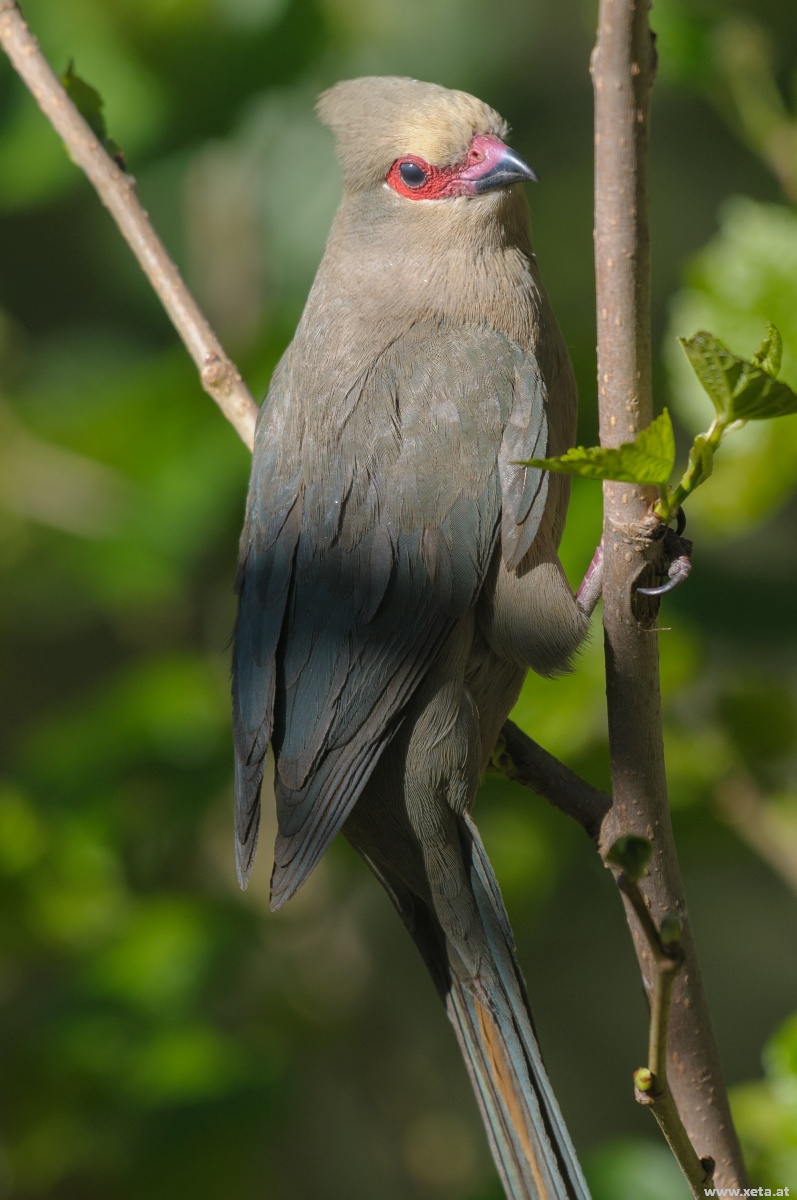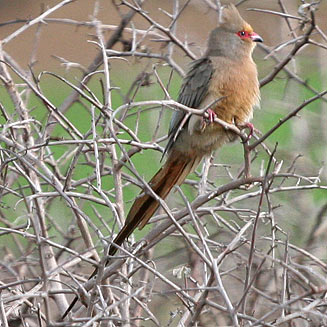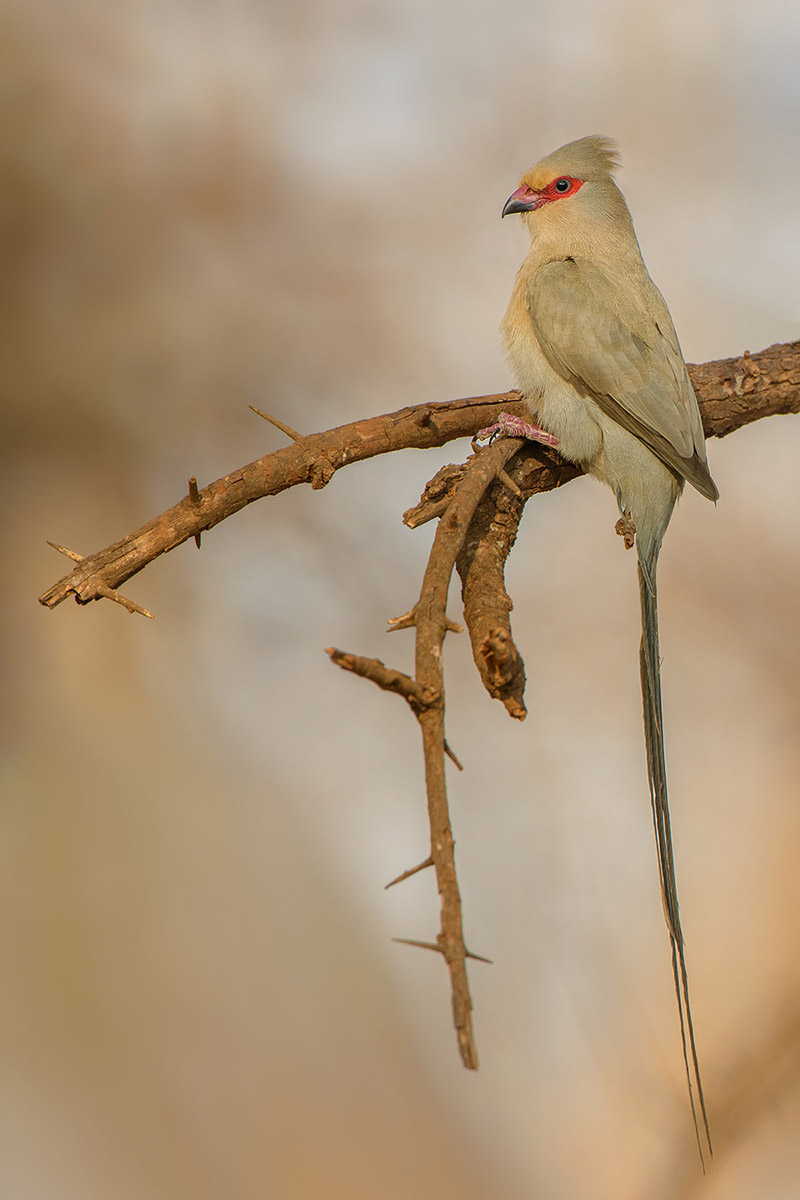
Urocolius indicus
TAXONOMY
Colius indicus Latham, 1790, India, error = Gamtoos River,
Cape Province, South Africa. Five subspecies.
OTHER COMMON NAMES
French: Coliou quiriva; German: Rotzьgel-Mausvogel, Brillen-
Mausvogel; Spanish: Pбjaro-ratуn Carrirojo.
PHYSICAL CHARACTERISTICS
11.4–14.3 in (29–37 cm); 1.6–2.3 oz (45.1–65.9 g); in captivity
to 2.5 oz (72 g). Upperparts gray with metallic greenish sheen;
underparts buff. Tail is very long and slender. Bare skin around
eyes and on lores is carmine-red. Most of upper mandible is red
and the rest of the bill is black. Feet are purplish red. Subspecies
differ primarily in intensity of plumage color.
DISTRIBUTION
Southern Africa from the Congo mouth, Angola, and southernmost
Tanzania to the Cape.
HABITAT
Open woodland and savanna, moving widely for food supply;
in recent times, more common in gardens and orchards in human
settlements.
BEHAVIOR
Live in pairs or family parties, sometimes observed in larger
groups.
FEEDING ECOLOGY AND DIET
Fruits and other green matter.
REPRODUCTIVE BIOLOGY
Eggs white with red-brown spots. Newly hatched young are
naked with characteristic bulbous swellings at base of lower
mandible. Grow quickly, flying after 16–18 days.
CONSERVATION STATUS
Not threatened, but changing numbers noted in some areas
following changes in vegetation.
SIGNIFICANCE TO HUMANS
Mostly none, but sometimes considered pests in gardens and
other human cultivations.
Other popular Animals
Photo Gallery of - Red-faced mousebird




 Animalia Life
Animalia Life